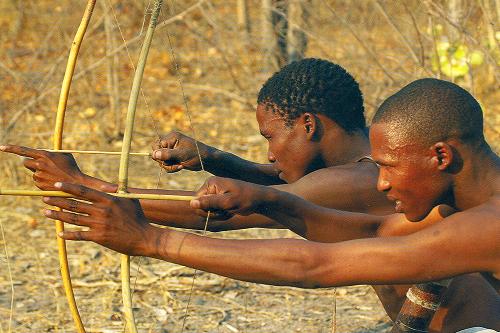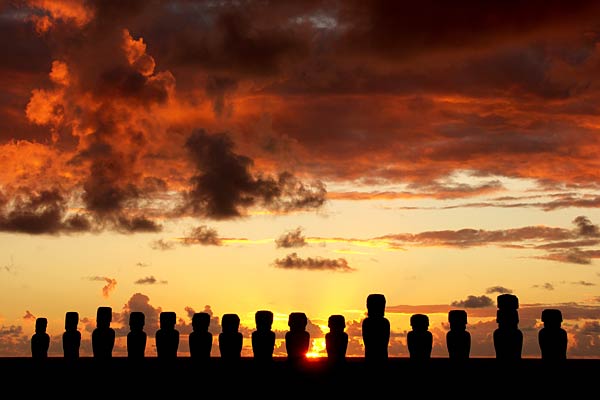Many relationships can be thought of in terms of feedback loops. Feedback is a signal produced from a particular system that can be looped back to control the system itself. Feedback loops help to maintain the stability of a system by self regulating. If the feedback is negative, the system will ultimately undergo stress and be forced to change or it will collapse. All systems on the planet incorporate the basic concept of feedback loops within their daily operations. Earth can be viewed as a closed system, in that there are no additional resources from another planet being added, and also that the resources and beings on the planet can not leave the system (Earth). Within this closed system, Earth offers a finite amount of resources to its inhabitants. As various processes begin, while others die out, it is important to keep the concept of sustainability in the back of one’s mind. Eventually, if there is too much negative feedback, the Earth and its systems could very well become inhospitable for human life.
History may be examined in relation to the various environmental conditions faced by early humans in light of the concept of feedback. The importance of feedback is that it reinforces or rejects certain behaviors, such as cutting down trees, which can lead to deforestation and harm whatever is living within the confines of the system. Perhaps some of man’s earliest technological advances started off in this fashion, but lead to the dying out of the groups that attempted to incorporate them.
Hunting and gathering societies were dependent on low population numbers so that resources were not over used. Infanticide and abandonment of older or sickly group members was a way for some societies to control the numbers of the group (Ponting 19). Hunter gatherers also migrated to avoid overusing resources within a particular area. Clive Ponting lists several societies of hunter gatherers still living today, including the bushmen of south-west Africa, that practice these same principles. The bushmen survive today, the way they have for tens of thousands of years, primarily by eating mongongo nuts that are obtained from a drought-resistant tree. In the bushmen’s world, “leisure time is valued very highly and is preferred to increasing food supplies (which are already more than adequate) or producing more over the millennia; the bushmen retain their hunter gatherer status even in the twenty-first century.
Not all prehistoric people lived such a privileged life as the bushmen. However, prehistoric peoples led a difficult life that did not guarantee regularly fed bellies. Hunting was a not an easy task and usually did not result in a meal (Ponting 22). Most of the early humans’ systems involved inputs of unsteady food sources, primitive tools, and much uncertainty. It is obvious that good feelings and contentment was not a common feature of these societies. Instead, most likely, hunger and the quest for stability lead to an alteration in the sort of system that most hunter gatherer societies adapted.
Early agriculture could very well have started off as a positive response in a feedback loop. Agriculture offers the benefits of stability, a regular food source (in a good year), and leisure time in the off-growing season. Societies and their cultures could be built as language and different traditions came about. Humans also had time to develop new tools and techniques, as well as to perfect the use of such technologies as animal husbandry and the use of fire (Williams 15 – 16). Over time, agriculture could possibly have been built into a feedback loop. Perhaps even agriculture itself has built-in feedback loops that humans evolved to exploit over time. In the dawn of agriculture, toiling long hours to produce a crop was probably not exactly what the early human viewed as pleasurable or was eagerly sought. Early humans did not jump straight from hunting and gathering to farming overnight; instead, the shift was gradual and took many years. The transition perhaps occurred because of the built-in feedback loops that are inherent in agriculturally-dependent societies. The benefits of agriculture (ie. more leisure time during good growth spells) possibly acted as positive feedback and promoted the commitment to shifting towards agricultural dependence.
This is not to say that it was an easy life once prehistoric man had made the shift to agriculture. By no means could eking out a living toiling in the fields be labeled a simple task; man was still subject to starvation if there were a bad crop or if stores were raided by other groups. Regardless of however many negative feedback responses there might have been, the shift of most of the prehistoric world to agriculture leads us to believe that there was more positive feedback than negative in an agriculturally-based system.
Not all early human societies had either an evolving or a sationary system. Some systems of the early human world were destroyed. One such example is Easter Island. Most likely populated by Polynesian peoples, who arrived in canoes to the island around 800 to 900 AD with chickens, rats, and a few ground crops (ie yams), the island had little clean water and very few natural resources. The early Rapanui (Easter Islanders) had a hard life within their fragile system. Regardless, most historians agree that the islanders survived well enough with their yam crops and chickens to begin to build (around 1200 AD) massive stone heads, known as moai (Hunt 1). Scholars debate why or how this practice came about, but the process of how the moai were built is well known. The Rapanui cut down the existing island trees to use as rails to move the large stone pieces from the quarry to the building site. The Rapanui’s obsession with moai building had become so great that “by the end of the 17 th century, the Rapanui had deforested the island, triggering war, famine, and cultural collapse” (Hunt 1). In this system, the positive feedback of whatever sense of enjoyment the Rapanui received from creating the moai caused the downfall of the system.
Researcher Terry L. Hunt argues that it was not the Rapanui’s fault for overloading the fragile system, leading to its collapse. Hunt argues that the rats that the Rapanui brought with them to the island quickly multiplied and began to overpopulate the island. Because the rats had few predators, and because of their ability to rapidly reproduce, the rats began to deforest Easter Island just as quickly, if not more quickly, than the Rapanui were already (Hunt3). The two factors, combined with the fact the native trees on the island had an extremely slow growth rate, meant that even if the Rapanui were practicing sustainability by planting trees for the ones they cut down, the new trees would not grow fast enough to allow for the rate the Rapanui and the rats combined were deforesting the island. The Rapanui had extremely bad luck and the misfortune of populating an island that had few resources and slow-growing trees. The Rapanui also had the misfortune of developing a tradition that was responsible for the downfall of their young civilization.
In closing, it is important to note that every aspect in our world is part of a system. Some systems are more fragile than others, as evidenced by the Easter Island case. Other systems (eg. The bushmen) are able to be maintained or progress (agriculture). Early man’s relationship with the environment was a fragile and delicate balance as various systems and man co-evolved to what we have today. The various inputs and alterations man made to the system as he evolved ultimately depended on the various ways feedback loops were established or discovered within the system. Even today, we face a fragile system that looks as if it could collapse with global warming and other unforeseen threats looming. It is important now, as it has always been, to examine all aspects of the system and to determine if what we interpret as positive feedback will not ultimately lead to a shock in the system and cause a collapse, as it did for the Rapanui on Easter Island.
Sources:
Williams, Michael, "Deforesting the Earth: From Prehistory to Global Crisis" (Univ. of Chicago Press, 2003) pp. 3-36.
Ponting, Clive. A Green History of the World: The Environment and the Collapse of Great Civilizations. St. Martin's Press, New York, 1991. ISBN 0-312-06989-1, McCabe GF75.P66 1992 pp. 18-67.
Rethinking the Fall of Easter Island. Terry L. Hunt; American Scientist Online, September - October 2006. Pg 1- 9.

